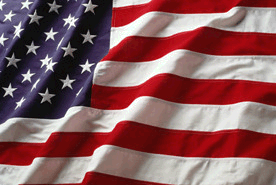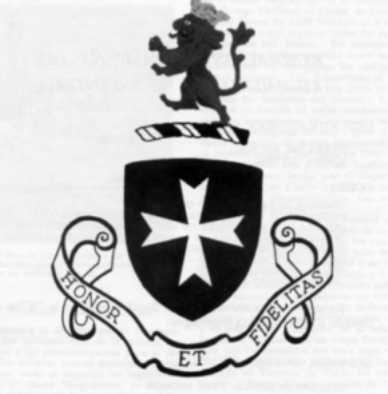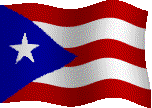 ...............
............... ...............
...............
 ...............
............... ...............
...............
CHOSIN RESERVOIR REDUX
My article, "The Forgotten War's Forgotten Task Force" (July), which deals with the role of Task Force Dog in assisting our entrapped troops in the 1950 Battle of the Chosin Reservoir, has provided Col. Gilberto Villahermosa with the opportunity to cleverly extol the performance of the 65th Infantry Regiment in that endeavor. I am in agreement with Col. Villahermosa's letter (September) insofar as it contends that Task Force Childs falls in the same category in which I placed Task Force Dog by my assertion that its performance "has been inadequately recognized" by historians. However, I am of the opinion that the limited space available in a letter to the editor for a complete presentation of facts has caused what appears to be an overstatement of the importance of the role played by Task Force Childs in the Chosin withdrawal. In particular, I cannot agree with Col. Villahermosa's conclusion that if Task Force Childs had not successfully accomplished its mission, "it is unlikely that the marines or the men of Task Force Dog would have survived to fight another day."
I mentioned the roles of the 65th Infantry Regiment and its Company G on two occasions in my article. Although I felt that further discussion about them would exceed the scope of my article, I am certainly aware of the valuable help they provided. It can be said that every friendly unit that held a piece of commanding terrain from Koto-ri to Hamhung made an important contribution to the successful withdrawal by discouraging the enemy from occupying that ground. In my opinion, the participation of the 65th Regiment in the Chosin withdrawal warrants an article in itself. An article would permit a detailed presentation of the facts and the citation of specific authority to support those facts. Many interesting questions raised by Col. Villahermosa's letter could be answered in an article.
Why was Lt. Col. Childs, rather than the regimental commander, commanding a powerful task force that included two of the 65th Regiment's three organic infantry battalions?
Is there any credible evidence to contradict information that Task Force Childs provided flank security for only two miles north of Majon-dong during Task Force Dog's nine-mile movement to Chinhung-ni on December 7, 1950? If so, how far was the flank security provided? Was this at least as far as the six-mile distance to Sudong where there had been recent enemy activity? What enemy contact, if any, was encountered by Task Force Childs on this mission? (The movement of Task Force Dog to Chinhung-ni was positively made on December 7, rather than the 8th as indicated in Col. Villahermosa's letter.)
When did the elements of Task Force Childs return to their positions at Majon-dong?
Rather than Company G being left at positions in the vicinity of Sudong, was it not moved to those positions because of a request for this help from Task Force Dog on the afternoon of December 8?
Besides the positions assigned to Company G, did any other elements of Task Force Childs occupy positions north of Majon-dong during the period December 8-11, 1950?
Is there any validity to the statement by Lt. Col. Roy E. Appleman, a prominent Army historian, in his book Escaping the Trap, (page 284) that "the 65th Regiment was unable to establish control of the road for the entire distance to Chinhung-ni"? If so, why was this?
I hope that Col. Villahermosa will have the time in his new assignment to write such an article. From his articles and my prior discussions with him it is obvious that he has the expertise.
COL. GEORGE O. TAYLOR Jr., USA RET.
Virginia Beach, Va.
*****************************************************************************************************************************
Regarding "The Forgotten War's Forgotten Task Force" by Col. George O. Taylor Jr., (July), I take exception to the author's use of the term "Task Force Faith," although I understand why he used it. The 31st Regimental Combat Team (RCT) existed at Chosin and that designation was never changed except in the minds of writers who took the easy way out by becoming copy-cat historians. The 31st Infantry landed in North Korea as RCT 31, as did other regiments of the 7th Infantry Division and the 1st Marine Division. The reason was the dispersion of forces that dictated RCT formations. When RCT 31 was ordered to the Chosin Reservoir it did so with a minor change in organization: 1/31 was detached and 1/32 (Faith's battalion) was attached. It was not "Task Force MacLean" as used by Roy Appleman, Clay Blair and others, nor "Task Force Faith," first used by Martin Blumenson in Russell Gugeler's Combat Actions in Korea. Task forces are created by higher commands. A military organization does not "become" a task force nor is a task force later awarded honors. It is a paper tiger. After the attacks east and west of the Chosin, Col. Alan MacLean was wounded and captured by the Chinese, after which Lt. Col. Don Faith became RCT commander because both Lt. Col. William Reilly, commander of 3/31 Infantry, and Lt. Col. Embree, commander 57th Field Artillery Battalion, had been seriously wounded and, fortunately, evacuated. Lt. Col. Faith then became commander of the RCT units east of Chosin and led the final breakout on December 1, the day the third infantry battalion of RCT 31, 2/31, had arrived and was occupying defensive positions at Koto-ri with Col. Lewis B. (Chesty) Puller's 1st Marines, too little too late. When Don Faith died leading an attack on Hill 1221 on December 1, 1950, he was doing it as the commander of the 31st Regimental Combat Team. The term Task Force Faith may have fit the scenario later when he was posthumously awarded the Medal of Honor, but it did not exist during the action east of Chosin. Both MacLean and Faith were playing the role of infantrymen at the time they died. They died Pro Patria -- For Country -- as did more than one thousand soldiers whose remains to this day lie somewhere on the east side of the Changjin (Chosin) Reservoir.
COL. GEORGE A. RASULA, USA RET.
Clemson, S.C.